Servicing the NUDA and NANA carbon pumps
At Rene Herse Cycles, we offer parts that last a long time and that are rebuildable if it ever becomes necessary. And not just ‘rebuildable’ in theory – we stock the parts you need for the rebuild, and provide detailed instructions how to do it. It’s all part of our commitment to customer service.
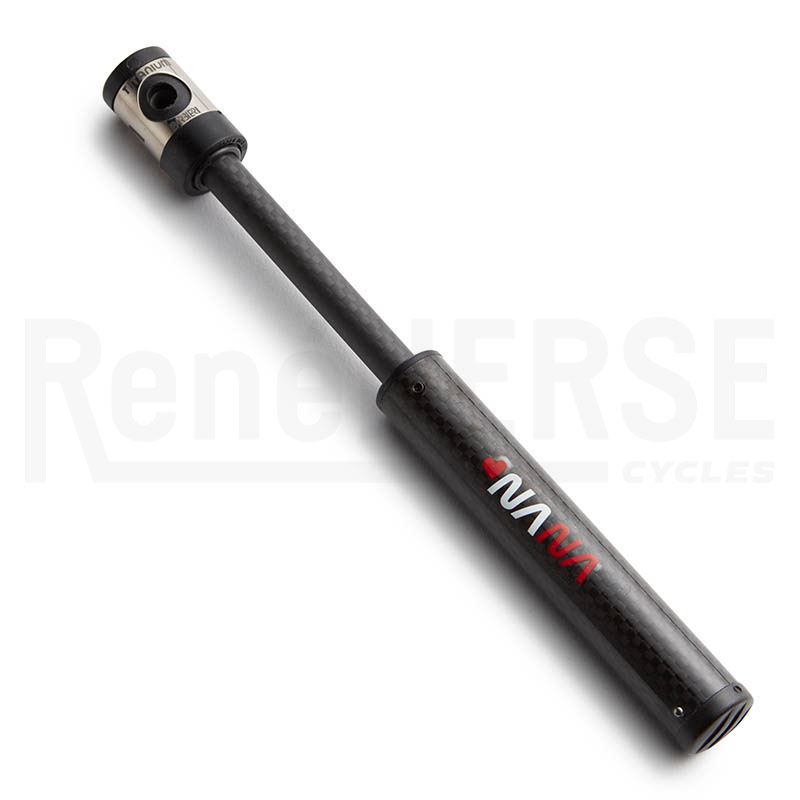
The superlight NDUA and NANA carbon pumps are unlikely to need rebuilding – they are intended as an emergency pump that you use only on the rare occasions when you have a flat on the road. (If you have a lot of flats, you’ll want to carry a full-size frame pump.) There isn’t much that wears out on these pumps – Natsuko used her NUDA for many years without problems.

The one thing that can wear is the O-Ring that seals the pump against the valve. Depending on how sharp the threads of your valve stems are, they can abrade the O-Ring every time you push the pump head onto the valve. Fortunately, that O-Ring is easy to replace, if it becomes necessary after many uses. Spare O-Rings are available here.
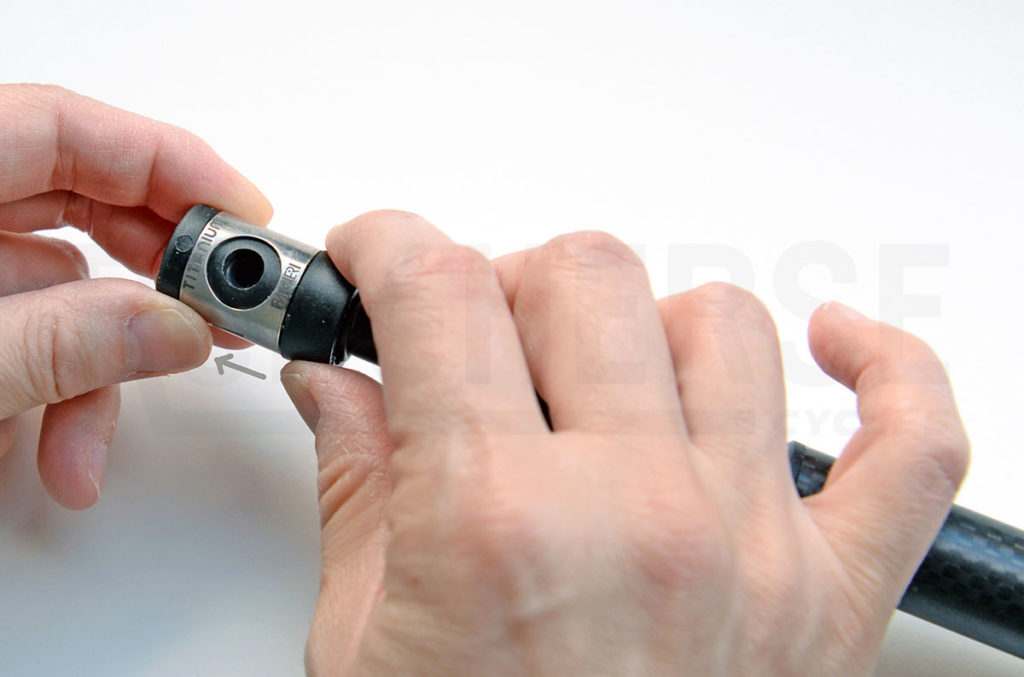
To replace the O-Ring, slide the titanium cover for the valve hole all the way to the top of the pump head. That exposes a small gap at the bottom edge of the titanium cover.

Insert a butter knife (or similar flat tool) into the gap. Twist to remove the plastic ring that holds the titanium cover in place.
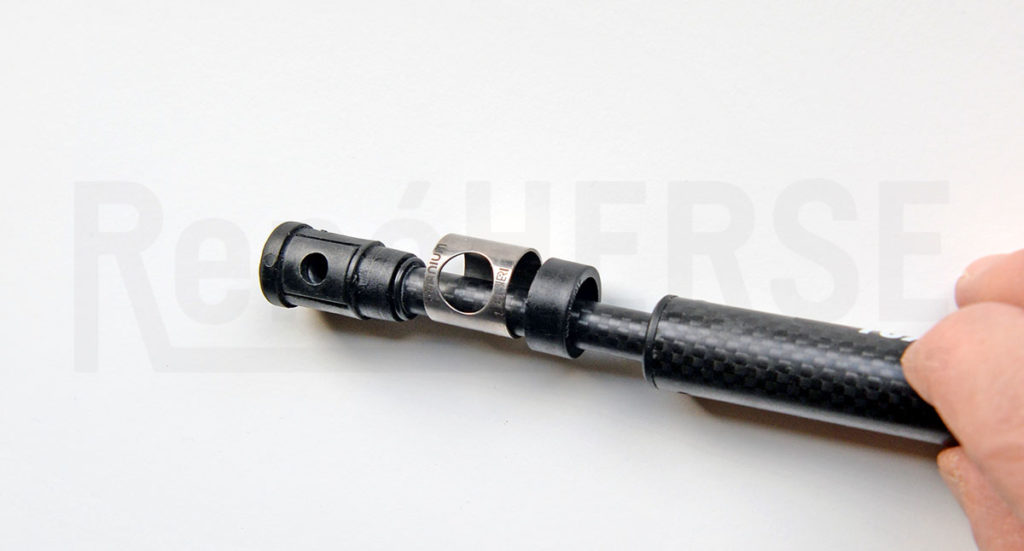
Slide both the plastic ring and titanium cover onto the pump shaft.

Remove the rectangular cover. Replace the O-Ring. Reassemble. That’s it! It’s really easy and takes less than 5 minutes.
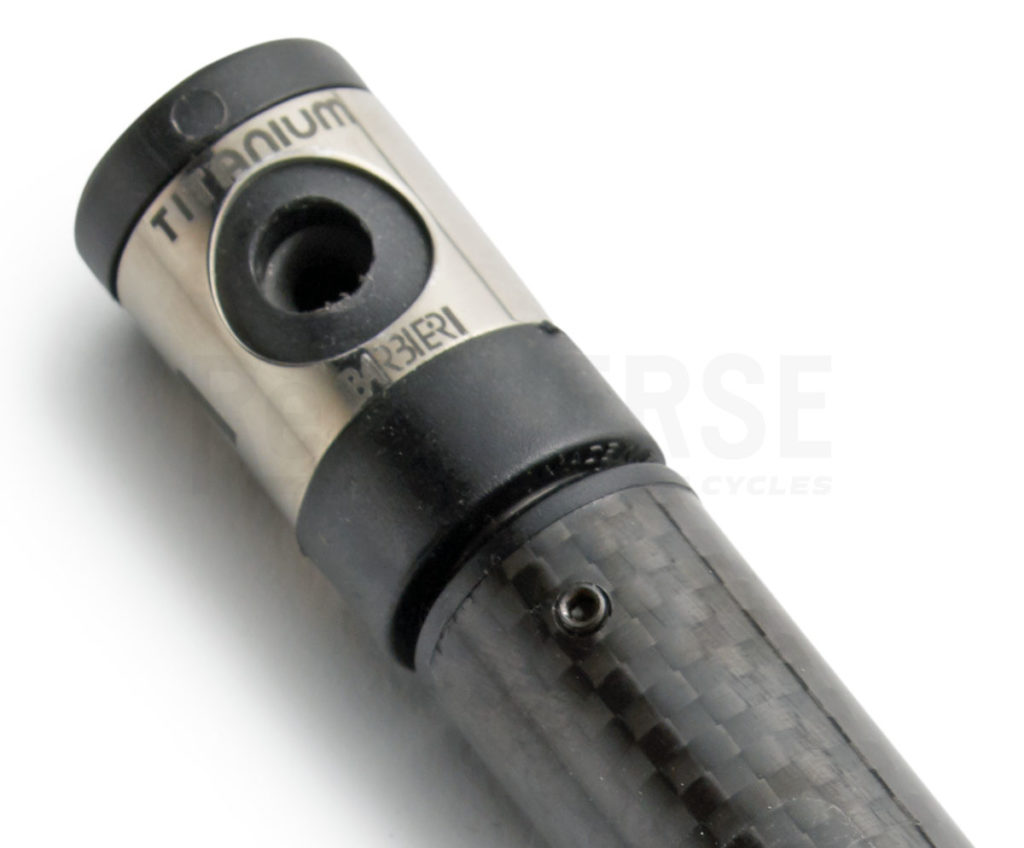
Some tinkerers have also noticed that the pump is assembled with two tiny Allen screws. It’s very tempting to remove those screws and see what the pump looks like inside. There’s no need to do that – the plunger that creates the pressure does not wear out.
DON’T REMOVE THE SCREWS! Why? The screws thread into the relatively soft carbon. To hold tight, they need to be screwed in at just the right torque. A little too much torque, and they’ll break through the thin carbon at the bottom of the hole, and then they won’t stay in place any longer. If you remove them, use a strong threadlocking compound (Loctite) on the screws, and don’t tighten any further once they sit flush with the pump barrel – that’s where they bottom out. It’s hard to feel the bottoming out… If the screw continues to turn further into the pump barrel, you’ve broken through. In that case, use the strongest Loctite you can find and set the screw so it’s flush with the pump barrel. (Removing the screws voids the warranty, by the way.)
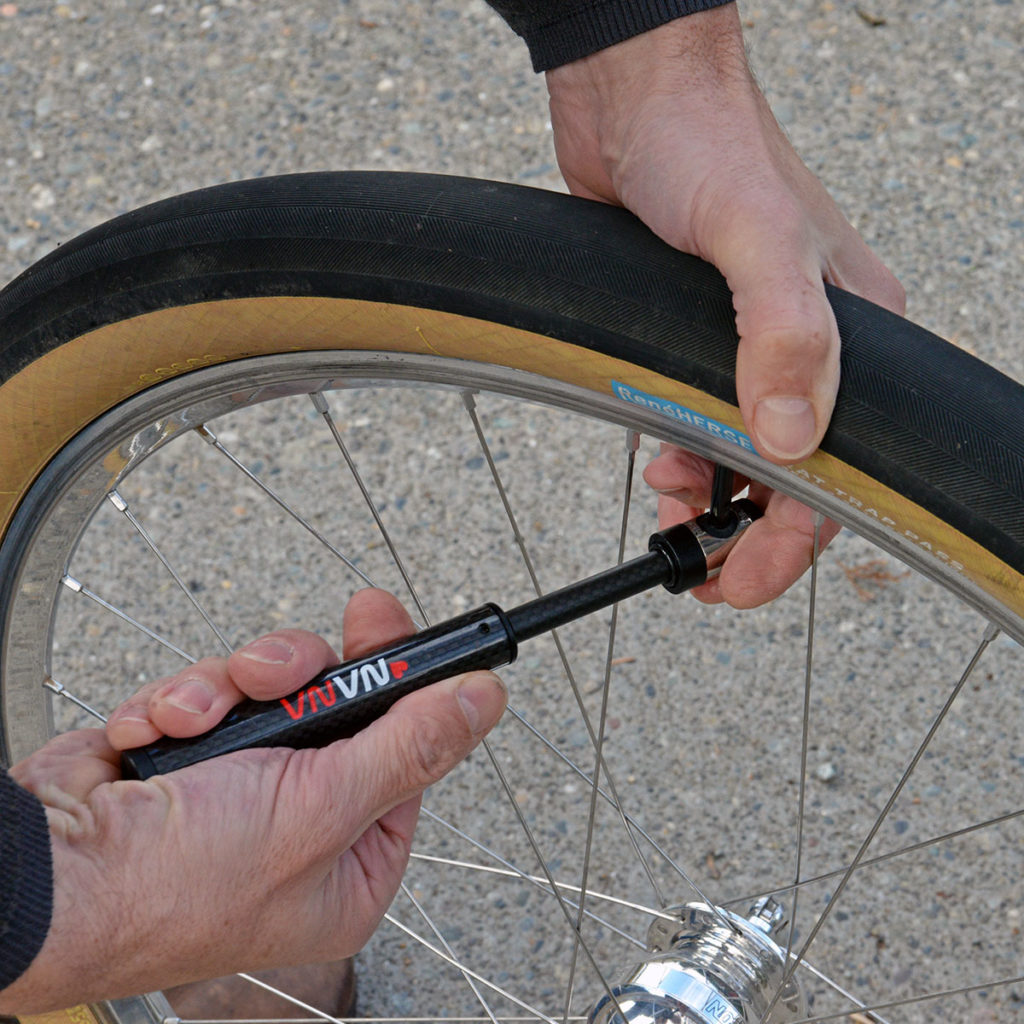
Working on these instructions for the NUDA and NANA pumps got me thinking why some pumps have hoses and others connect directly to the valve. In Europe, pumps for city bikes usually have hoses, because you don’t remove the wheel to fix a flat. With chain guards, etc., removing the wheel is a major operation. Instead, you pull the tire off the rim, pull out the tube, find the hole, patch it, and then put the tube back into the tire – all while the wheel remains installed in the frame. Inflating the tire with the (heavy) bike lying on the ground is much easier if you have a flexible hose to connect to the valve. Otherwise you’d have to align the pump with the valve and contort yourself while inflating the tire.
Performance bikes have wheels that are easy to remove, and then it’s much easier to pump if the wheel is firmly attached to the pump head. You can pump standing up, rather than hunched next to your bike/wheel. That’s why pumps for performance bikes usually connect directly to the valve. (Plus, it’s faster in a race if you don’t need to assemble the hose.)
With tubeless tires, it can be necessary to top up the pressure on the road. A hose can be useful, especially since thru-axles and disc brakes make removing the wheel a bit more involved than quick releases and rim brakes. And of course, floor pumps use the ground to push against, so they need a flexible hose connection as well. It all comes down to what kind of bike you ride…
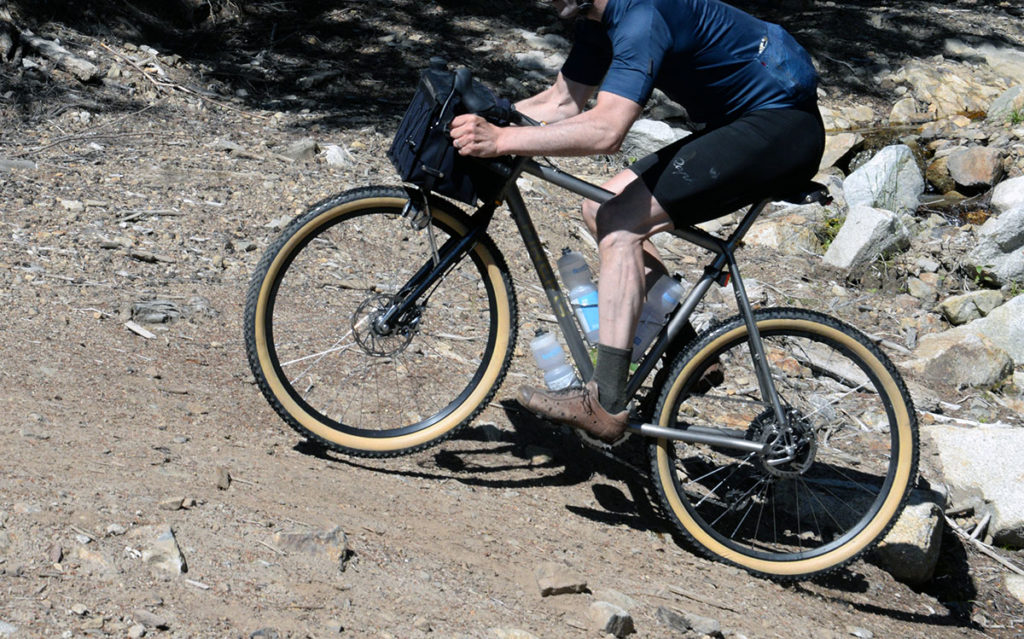
In other good news, almost all our Rene Herse tires are in stock. The two missing ones (Hurricane Endurance, black Snoqualmie Extralight) are on the way. Some quantities are still limited, but we’re working hard to keep you rolling on supple rubber this cycling season.



